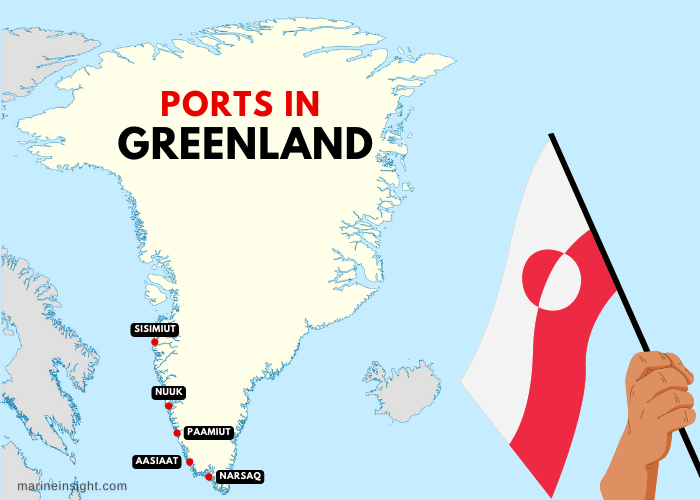7 Major Ports in Greenland
Greenland lies between the Arctic and the Atlantic oceans and is the largest island in the world. Though geographically it is considered a part of North America, it shares cultural and political similarities with Europe. The population is sparse and mostly concentrated on the southwestern coast.
The nation has a history dating back to 5000 years when it was inhabited by numerous Arctic tribes hailing from different ethnicities, who are said to have migrated from present-day Canada and other Scandinavian countries.
The economy is dependent on the fishing sector which contributes 90 per cent to the GDP and forms the principal export commodity. Minerals like iron, uranium, copper, aluminium and titanium are found in abundance. Greenland imports machinery parts, medicines, cars, grains and refined petroleum from European Union countries.
The island nation has more than 40 ports and harbours but most of these receive small ships and remain functional only during the summer months. Let us review the 7 principal ports of Greenland.
1. Nuuk Port and Harbour
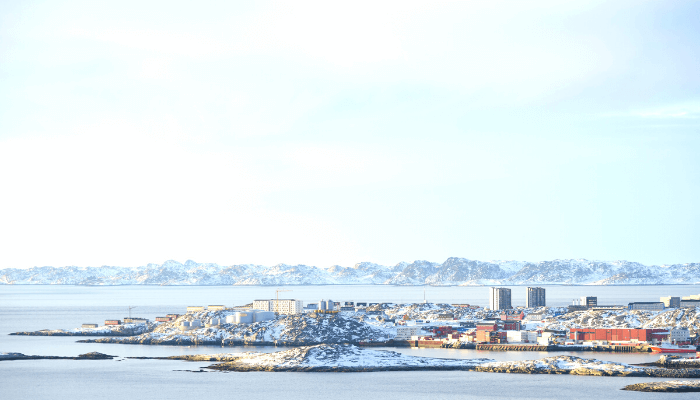
The largest cargo port in Greenland, the Nuuk lies on the western coast of the country, in the southeastern area of the capital city, known as Old Nuuk. A modern seaport, it enjoys a favourable geographical location and remains ice-free throughout the year. In 2021, around 474 vessels visited the port, carrying more than 2 million tonnes of cargo.
It has numerous specialised terminals for accommodating container ships, trawlers and cruise vessels. It is also equipped to handle and store large-scale transhipment cargo.
The government of Greenland transferred the ownership and management of the Nuuk port to a local port authority called Sikuki Nuuk Harbour A/S. Some facilities are maintained by private stakeholders such as the Oilpier for tankers belonging to Polaroil.
Port Quays and terminals
Nuuk harbour is divided into an outer port and an inner port. The latter has a marina for receiving small vessels and ferries. The new container terminal was built in 2015 and has been operated by the Royal Arctic Line since 2017. It has a 360 m long quay line, three mobile harbour cranes and over 40,000 square metres of container processing and storage area, including 500 reefer connections.
Until 2014, Ny Atlantkaj was the busiest port facility in the harbour dealing with all kinds of cargo. However, after port expansion, its operations were reduced to trawler handling and receiving cruise ships from June to September. It spans 100 metres and has a water depth of 10 m. The oldest construction, the Feederkaj, is a 40-metre wooden pier built in 1969. Presently it accommodates smaller cruise vessels, expedition vessels and is also visited by navy ships.
Constructed in 1970, the Skonnertkaj is a part open and a partially closed structure spanning 60 metres, made of steel and timber and mainly used by Arctic Umiaq Lines coastal ship, Sarfaq Ittuk. Adjacent to this facility is the Montagekaj, a sheet pile structure built-in 1974. It is unsuitable for loading and unloading operations of a large scale and undertakes ship repairs and maintenance only.
Nuuk has two fishing berths with a 200 m berthing line and a depth of 7.5 metres. Constructed in the 1980s, these closed pile structures can accommodate small fishing vessels.
The Bulk terminal or the Sandlosningskaj handles dredged sand, cement and imports of raw material, machinery etc. Originally constructed in the 1970s, it was expanded in 2009. It covers 100 m and has a water depth of 7 m for accommodating only bulk carriers.
Lastly, the old port of Sissiugaq or old Nuuk does not handle cargo anymore. It has been converted into a recreational area close to the city centre. Its tidal stairs are used by hunters and the Nuuk kayak club. A pontoon on its southern end is used by local tour operating companies.
2. Port of Sisimiut
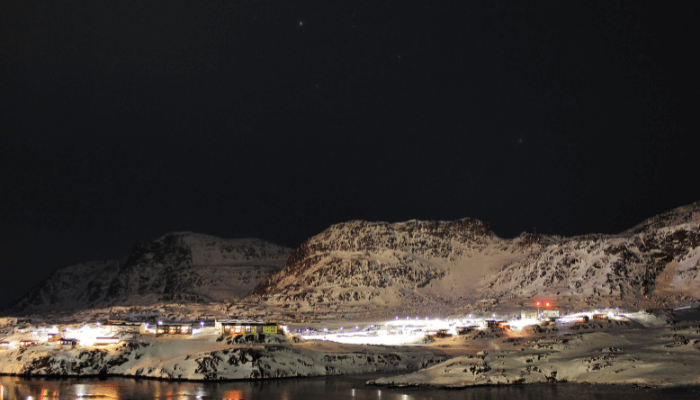
Also known as Holsteinborg, Sisimiut is the biggest financial centre lying north of the capital city of Nuuk. It is one of the fastest-growing cities with a prosperous fishing sector and an expanding industrial base. The major catch comprises shrimp, cod, salmon, crabs etc. Hunting is important for the locals who lay traps for catching seals, whales, reindeer, rabbits and foxes.
Situated on the coast of Davis Strait, the settlement dates back to 5000 years. It was inhabited by several ethnic groups and was visited by European whale hunters throughout the 17th and 18th centuries. Today, the port houses many fish processing plants, the biggest being Royal Greenland, the most modern shrimp processing unit in the country.
The port is located on the southern shores of the Kangerlussuaq bay and receives small general cargo vessels, bulk carriers and fishing vessels. Icebreakers are required since ice thickens in January and begins to thaw in May. It has over 24 metres of anchorage area and three berths with a water depth of 10 m for accommodating ships with a 135 m LOA and a 7 m draught. Sisimiut port handles more than 65,000 tonnes of cargo each year.
Tourism is gradually growing in the city based on winter sports like alpine skiing at the foot of the Kellinghusen mountain, mountaineering, sailing, sightseeing and kayaking. Every year, a 170-kilometre long boat race is organised in the city along the polar route which even attracts international tourists from neighbouring countries.
3. Port of Qasigiannguit
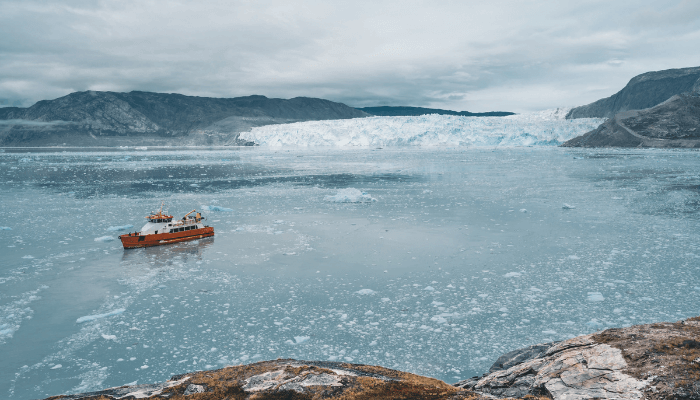
The port of Qasigiannguit lies in western Greenland on the southern banks of the Disko bay. One of the biggest towns in the island nation, its economy rests on fishing and manufacturing sectors. The town was established in the mid-1750s as a trading post for a dutch company and was named after King Christian of Denmark, hence it was called Christianshab in the mediaeval period.
The port has a 150 m long main quay that handles general cargo, containers and stone. Two additional berths covering 200 m are dedicated to passenger ships only. A 100 m long floating jetty accommodates oil tankers carrying crude oil, fuel oil etc.
It is not operational throughout the year and remains closed in harsh winters. The 22 m anchorage area receives ships with a maximum LOA of 165 m and a draught of 9 metres. Two 5000 m2 storage areas are located in the port vicinity for keeping container goods and a 1500 m2 yard for parking machinery and equipment.
The peaceful town is linked with neighbouring villages and cities through ferries as roads cannot be used in winter. Ferries from Qasigiannguit leave for Ilulissat, Akhunaaq and Aasiaat. Close to the port is the Braettet or the food market where locals gather every week to sell or barter things or produce. A makeshift canopy is built, lined with wooden benches where things are displayed.
The port city offers an exciting experience and one can relive the authentic life of the Greenlanders by visiting their traditional restaurants, cafes and local museums. Most famous is the Qasigiannguit museum which showcases the tools, furniture and clothing of the indigenous people who inhabited the region 200 years ago.
Tourists can also book excursions and group tours with local operators. In summers, humpback, minke, fin and blue whales swim north towards the bay for feeding on the shrimp, squids and algae. Multi-Day trips are organised, where people can enjoy watching whales, dog-sledging, snow-fishing, mountaineering and skiing near the Fjord area.
4. Port of Narsaq
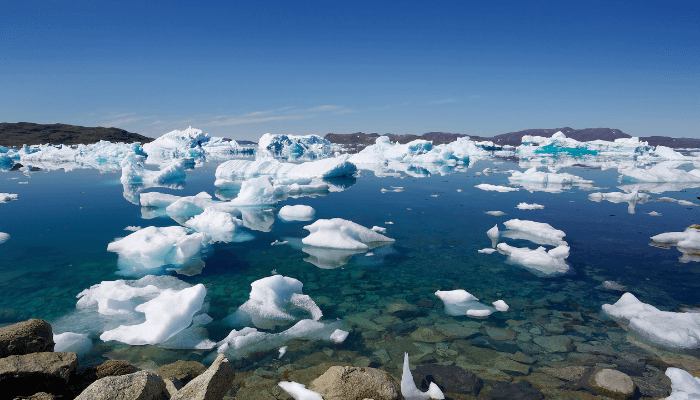
Situated on the southeastern coast of Greenland at the head of a narrow cove, opening to the Labrador sea, Narsaq port is one of the most important natural deep-water harbours of Greenland, handling more than 50,000 tonnes of cargo including general cargo and containerised goods. It can easily accommodate ships measuring 150 metres with a draught of 9.5 m. Narsaq port has a small L shaped commercial wharf and three supermarkets at the floating dock which also provides bunkering services.
The port was established as a trade centre in the 18th century, where native hunters exchanged blubber, seals, furry animals etc for consumer goods like coffee, tea, sugar, grains and bread brought from Europe. In the early 1900s, seal hunting was the economic mainstay however, it gradually shifted to fishing by the 1990s. Narsaq has many indigenous churches and houses dating back to mediaeval times. Interestingly, few of these house government offices and other private companies.
Narsaq has cultivable lands and more than 30 sheep farms. Hence, cultivation and livestock raising are also important for the local economy. These animal farms produce meat for domestic consumption and the city contains the only slaughterhouse of Greenland.
Another major contributor to the economy is tourism. Though the influx of tourists declined in the past three years, tourism supports a large percentage of the workforce. Many locals convert their houses or hunting cottages into small hotels and offer tours for sightseeing, hiking, fishing, boating and much more.
5. Port of Paamiut
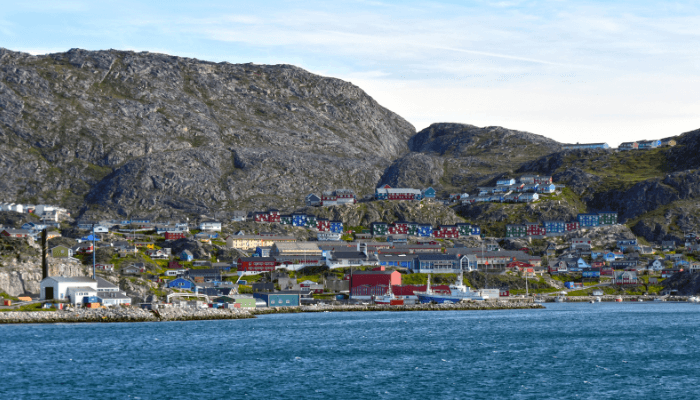
Also called the Frederikshab port, Paamiut lies on the southwestern coast of Greenland facing the Labrador sea, an arm of the North Atlantic Ocean. It handles containers and general cargo while serving as a ferry port for the freight and passenger shipping company, Arctic Umiaq Line.
It is open from August till January and is one of the most difficult ports to access due to the accumulation of ice, blocking the harbour entrance. Paamiut port has four wharves capable of receiving ships with an LOA of 140 m. More than 35,000 tonnes of cargo is handled at the facility annually.
The port town is known for its awe-inspiring beauty and the rare white-tailed eagle which is a part of many Nordic mythologies. The rudimentary port was built in the 1740s with the influx of European traders and their families. It was transformed into a major trade hub by the Norwegian merchant Dano who named it after Prince Frederick of the Danish kingdom. Large quantities of fur, whale oil and seafood were shipped from Paamiut to Europe. Presently, the town has a thriving soapstone art and cod industry.
6. Port of Aasiaat
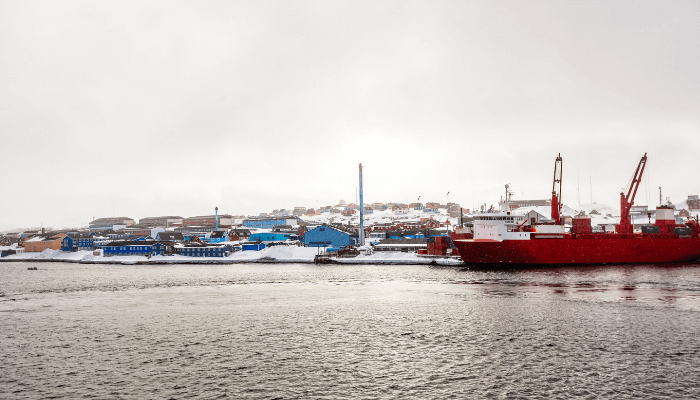
Also known as the Egedesminde, Aasiaat port is situated on the northwestern coast of Greenland and is a regional distribution centre for consumer goods in the northern part of the country. It receives general cargo, containers, packaged items, foodstuff and electronics from May till December, which is the only operational period as the facility is closed in winter. It has a single 150 m long berth which can receive two ships simultaneously.
The town’s 3000 inhabitants are engaged in commercial fishing of shrimp and crabs. Shipbuilding and tourism are other significant economic activities. An airport links the settlement with the areas close to Disko bay and Kangerlussuaq.
7. Port of Ammassalik
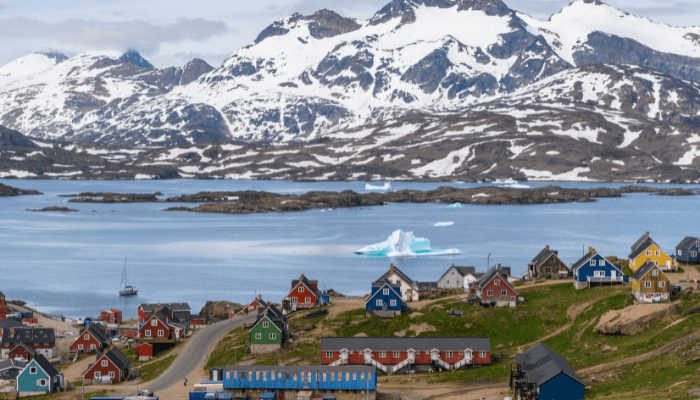
Amassalik also called the Angmagssalik or the Tasiilaq port lies on the southern end of the Angmagssalik Island off the eastern coast of Greenland. It receives small cargo vessels, ferries and passenger ships from July to October. The port serves its immediate hinterland by distributing manufactured items, especially canned food and cereals.
Tourists visiting the island port can go on ice cave tours, live in an igloo, try ice climbing, hiking, boat trips, Kayaking etc. Around 100 vessels carrying 20,000 tonnes of cargo visit the port annually.
The settlement was named after ammassat, a kind of fish found in the Labrador Sea. Presently, the town is an administrative centre of southern Greenland and also houses many educational and research institutions.
You might also like to read:
- 6 Major Ports in South America
- 7 Major Ports in Guyana
- 6 Major Ports in the Bahamas
- 10 Major Ports in Mexico
- 8 Major Ports in Australia
Do you have info to share with us ? Suggest a correction
Latest Maritime Knowledge Articles You Would Like:
Subscribe To Our Newsletters
By subscribing, you agree to our Privacy Policy and may receive occasional deal communications; you can unsubscribe anytime.



